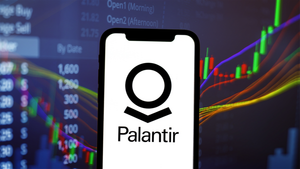
The global energy market is once again grappling with significant uncertainty as Kazakhstan's primary crude oil export artery, the Caspian Pipeline Consortium (CPC) pipeline, faces a series of debilitating disruptions. A confluence of geopolitical tensions leading to drone attacks on critical pumping stations and operational setbacks at the vital Novorossiysk Black Sea terminal has severely curtailed loading capacity, sending ripples through international oil supply chains and threatening to destabilize already volatile energy prices. These incidents, unfolding throughout 2025, underscore the fragility of global energy infrastructure and the profound impact regional conflicts can have on distant markets.
The immediate implications are stark: a significant portion of Kazakhstan's crude oil, a crucial contributor to global supply, is struggling to reach markets. With the CPC pipeline accounting for approximately 80% of the nation's oil exports, any sustained reduction in its operational capacity directly translates to a tighter global oil market, putting upward pressure on crude prices and forcing energy-importing nations to scramble for alternative sources. The timing is particularly sensitive, given ongoing global economic pressures and the persistent need for stable energy supplies.
A Year of Unprecedented Challenges for Kazakhstan's Exports
The year 2025 has presented a formidable gauntlet for Kazakhstan's oil export capabilities, characterized by a one-two punch of external attacks and operational failures. The first major blow came in February and March 2025, when Ukrainian drone attacks targeted key Russian pumping stations integral to the CPC pipeline system. On February 17, 2025, the Kropotkinskaya pumping station, the largest within the CPC network, was hit by seven unmanned aerial vehicles (UAVs). This was followed by a similar strike on the Kavkazskaya station on March 24, 2025. These attacks initially sparked fears of a substantial 30-40% reduction in throughput, though the CPC managed to keep oil flowing at reduced rates by bypassing the damaged Kropotkinskaya station. Repairs at Kropotkinskaya were extensive, with the station only recommissioned by May 26, 2025, after months of work.
Even as the CPC grappled with repairing its inland infrastructure, a separate and equally disruptive set of events unfolded at the pipeline's terminus: the Novorossiysk Black Sea terminal. In late March/early April 2025, Russian transport regulators ordered two of the three vital Black Sea mooring points at the terminal offline, citing inspections following a December 2024 tanker collision and oil spill in the Kerch Strait. This immediately constrained loading options. The situation worsened significantly in August 2025; one loading buoy was taken offline for three weeks of planned maintenance starting August 15. Then, on August 29, a separate incident during tanker loading caused an oil spill, taking another offshore loading buoy out of commission. This left the crucial terminal with only one operational mooring point, leading experts to warn of a potential 50% plunge in the CPC system's throughput.
The Caspian Pipeline Consortium (CPC) itself, a joint venture with major shareholders including Russian Transneft (24%), the Russian government (31%), and the Kazakh government (KazMunayGas, 19%), is at the epicenter of these challenges. Major international oil companies like Chevron Corp. (NYSE: CVX) and ExxonMobil (NYSE: XOM), significant shareholders in Tengizchevroil (TCO), the operator of Kazakhstan's largest oil field, are also deeply involved. The Kazakh government, heavily reliant on oil revenues, has expressed deep concern, while the U.S. government has even issued sanctions exemptions for CPC-related oilfield services, highlighting the pipeline's global importance. Initial market reactions were swift, with oil prices firming and Kazakhstan's oil export revenues in the first quarter of 2025 reportedly dropping by 21.2% year-on-year, partly due to reduced physical shipments following the Kropotkinskaya strike.
Corporate Fortunes in the Balance: Winners and Losers
The ongoing disruptions to Kazakhstan's main crude oil export route are poised to significantly impact the financial performance and strategic direction of various companies, creating both substantial losers and potential, albeit limited, winners.
At the forefront of the affected are the major producers operating in Kazakhstan, particularly Tengizchevroil (TCO), the joint venture responsible for the massive Tengiz field. TCO, whose shareholders include Chevron Corp. (NYSE: CVX) (50%), ExxonMobil Kazakhstan Ventures Inc. (NYSE: XOM) (25%), and KazMunayGas (20%), completed a significant expansion project in January 2025, boosting its production by 260,000 barrels per day (bpd). This expansion was intended to substantially increase Kazakhstan's overall crude output and, by extension, its reliance on the CPC. With export capacity now severely constrained, TCO faces the grim prospect of having to curtail production, leading to lost revenue and a diminished return on its considerable investment in the expansion. Both Chevron and ExxonMobil, as key stakeholders, will feel the direct financial brunt of these export bottlenecks through reduced equity crude sales and potential production curtailments.
The Kazakh national economy stands as another significant loser. Oil export revenues are the lifeblood of the nation, and the reported 21.2% year-on-year drop in Q1 2025 revenues due to earlier disruptions is a stark indicator of the fiscal pain. Prolonged issues at the Novorossiysk terminal will exacerbate this, potentially impacting government spending, investment, and the overall economic stability of the country. The Caspian Pipeline Consortium (CPC) itself, while being the victim of these incidents, will also incur substantial costs for repairs, maintenance, and potential legal liabilities, affecting its profitability and potentially future investment capacity.
On the other hand, the situation could create opportunities for certain players. Other global oil producers and exporters with diversified export routes or spare capacity might see increased demand for their crude, leading to firmer prices and potentially higher sales volumes. Furthermore, companies involved in the development of alternative export routes for Kazakhstan stand to benefit. The Kazakh government is actively pursuing options like reviving the Yeskene-Kuryk pipeline project and increasing exports via the Baku-Tbilisi-Ceyhan (BTC) pipeline. Engineering firms, construction companies, and logistics providers involved in these diversification efforts could see new contracts and increased business as Kazakhstan accelerates its push to reduce reliance on the vulnerable CPC route.
Broader Implications for Global Energy Security
The recent disruptions to the CPC pipeline transcend immediate supply concerns, highlighting profound wider significance for global energy security, geopolitical dynamics, and industry trends. The drone attacks on Russian pumping stations underscore the escalating risks to critical energy infrastructure in regions adjacent to ongoing conflicts. This new dimension of vulnerability means that even areas far removed from direct combat zones can experience severe supply chain disruptions, forcing a re-evaluation of risk assessments for energy investments globally. It fits into a broader trend of weaponizing economic and infrastructure assets in geopolitical contests, making energy markets inherently more volatile.
This incident strongly reinforces the imperative for energy diversification, both in terms of supply sources and export routes. Kazakhstan's intensified efforts to revive projects like the Yeskene-Kuryk pipeline and boost exports via the Baku-Tbilisi-Ceyhan (BTC) pipeline are direct responses to this vulnerability. These moves align with a global push by many nations to reduce reliance on single chokepoints and politically unstable regions for their energy needs, a trend accelerated by recent geopolitical events. The ripple effects extend to competitors and partners alike; other pipeline operators might face increased scrutiny regarding their security protocols, while nations dependent on similar transit routes will likely accelerate their own diversification strategies.
From a regulatory and policy perspective, the U.S. Department of the Treasury's issuance of licenses in January and May 2025, exempting oilfield services related to the CPC and Tengizchevroil projects from sanctions targeting Russia, is highly significant. It signals that despite geopolitical tensions, major Western powers recognize the critical role of Kazakh oil in maintaining global energy balance and are willing to make exceptions to prevent further market destabilization. This pragmatic approach highlights the delicate balance between geopolitical objectives and the practicalities of global energy supply. Historically, similar disruptions, such as those caused by conflicts in the Middle East or natural disasters affecting major oil hubs, have consistently demonstrated the interconnectedness of global energy markets and the rapid price responses to perceived supply tightness.
The Road Ahead: Navigating Volatility and Diversification
Looking ahead, the short-term outlook for global oil markets is likely to remain characterized by elevated volatility and upward price pressure as long as the Novorossiysk terminal operates at reduced capacity. The immediate priority will be the swift and effective repair of the damaged mooring points. Any delays in this process could force Kazakhstan's producers, particularly Tengizchevroil (TCO), to implement significant output cuts, further tightening global supply. Traders and analysts will be closely watching for operational updates from the CPC and the Russian authorities regarding the repair timeline and the recommissioning of the critical loading infrastructure. Geopolitical developments, especially those impacting the Russia-Ukraine conflict, will also remain a crucial factor, as further drone attacks or retaliatory actions could exacerbate existing vulnerabilities.
In the long term, these disruptions will undoubtedly accelerate Kazakhstan's strategic pivot towards greater energy export independence. The nation's efforts to expand alternative routes, such as increasing oil shipments across the Caspian Sea to Azerbaijan and then via the Baku-Tbilisi-Ceyhan (BTC) pipeline, will gain renewed urgency and investment. This could lead to a gradual but significant reshaping of regional oil trade flows. For investors, this presents both challenges and opportunities. Companies with exposure solely to the CPC route face continued operational risks, while those involved in developing and operating alternative infrastructure or offering innovative logistical solutions may find new avenues for growth. The incident also highlights the growing importance of infrastructure resilience and security as key considerations for energy investment decisions.
Potential scenarios range from a relatively swift resolution of the Novorossiysk issues, leading to a stabilization of prices, to prolonged disruptions that could fundamentally alter Kazakhstan's role in the global oil market and potentially push oil prices significantly higher. The latter scenario would force a more rapid and costly re-alignment of global supply chains.
A Fragile Future: Key Takeaways for Investors
The recent and ongoing disruptions to Kazakhstan's vital Caspian Pipeline Consortium (CPC) pipeline serve as a powerful reminder of the inherent fragility of global energy supply chains in an era of heightened geopolitical instability. The dual threats of drone attacks on inland pumping stations and operational setbacks at the critical Novorossiysk export terminal have underscored the complex interplay between conflict, infrastructure vulnerability, and global market dynamics. The key takeaway is clear: reliance on single, geopolitically sensitive export routes carries significant risks, and the cost of these risks is ultimately borne by producers, consumers, and the global economy.
Moving forward, the market will likely remain on edge. While Kazakhstan's Energy Ministry has stated that oil intake is proceeding without restrictions, the reality of reduced loading capacity at the export terminal means that the effective flow of Kazakh crude to international markets is compromised. This persistent supply tightness will likely continue to provide underlying support for crude oil prices, particularly for benchmark crudes like Brent, which often react to disruptions in major producing regions. The incident also highlights the growing importance of supply diversification and infrastructure resilience as critical components of national and corporate energy strategies.
Investors should closely monitor several key developments in the coming months. These include the progress of repairs and the recommissioning of all mooring points at the Novorossiysk terminal, any further geopolitical escalations that could impact energy infrastructure in the Black Sea region, and the pace and scale of Kazakhstan's investments in alternative export routes. Furthermore, watch for any shifts in OPEC+ policy, as Kazakhstan has consistently exceeded its production quotas, and continued disruptions could complicate global supply management. The lasting impact of these events will be a heightened awareness of energy security risks and a renewed impetus for strategic planning to mitigate future vulnerabilities, shaping investment decisions across the energy sector.
This content is intended for informational purposes only and is not financial advice




